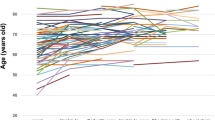Abstract
The present study describes the difference in clinical features between the patients with Haff disease and crayfish-related myositis (CRM) after crayfish consumption. This was a single-centre, retrospective analysis at the Emergency Department of the Drum Tower Hospital of Nanjing University School of Medicine from July to August of 2016. The baseline information came from the Electronic Medical Record System at the institution. Totally 96 patients were included, of whom 52 patients were confirmed to have Haff disease and 44 patients were CRM. The illness predominately occurs in summer and most of them (55/96) are female. The primary clinical features are myalgia, muscle allodynia and back and body pain. Statistical differences in the baseline CK, CK-MB, myoglobin, and the WBC count exist between the Haff disease and CRM groups (P < 0.05). The serum levels of CK and CK-MB increase in the second (a median time 29.2 ± 7.4 h) or third day (a median time 54.8 ± 9.3 h) of disease course, and then rapidly decreased to normal levels, while the levels of myoglobin peak at the admission (a median time 7.7 ± 6.4 h) and became normal after admission. There were no fatalities or complications during this study. All 96 patients recovered in a week. Of them, 75 were followed-up within 1 month and none had recurrence. The Haff disease and CRM after boiled crayfish consumption reflect a different severity of muscle injury, and reveal similar clinical characteristics and most of the laboratory values. The overall prognosis of both is good.



Similar content being viewed by others
References
Diaz JH (2015) Global incidence of rhabdomyolysis after cooked seafood consumption (Haff disease). Clin Toxicol (Phila) 53:421–426
Chan TY (2016) The emergence and epidemiology of Haff disease in China. Toxins 8:359
Paul V, Shamah S, Garankina O, Wolf L, Shia Lin Y (2014) Rhabdomyolysis after fish consumption: Haff’s disease. QJM 107:67–68
Centers for Disease Control and Prevention (CDC) (1998) Haff disease associated with eating buffalo fish—United States, 1997. MMWR Morb Mortal Wkly Rep 47:1091–1093
Buchholz U, Mouzin E, Dickey R, Moolenaar R, Sass N, Mascolau L (2000) Haff disease: from Baltic Sea to the US shore. Emerg Infect Dis 6:192–195
Shinzato T, Furusu A, Nishino T, Abe K, Kanda T, Maeda T, Kohno S (2008) Cowfish (Umisuzume, Lactoria diaphana) poisoning with rhabdomyolysis. Intern Med 47:853–856
Taniyama S, Sagara T, Nishio S, Kuroki R, Asakawa M, Noguchi T, Yamasaki S, Takatani T, Arakawa O (2009) Survey of food poisoning incidents in Japan due to ingestion of marine boxfish and their toxicity. Shokuhin Eiseigaku Zasshi 50:270–277
Huang X, Li Y, Huang Q, Liang J, Liang C, Chen B, Lu L, Deng X, Chen Z, Zhang Y, Wu Y, Shao B (2013) A past Haff disease outbreak associated with eating freshwater pomfret in South China. BMC Public Health 13:447
Junior OT, Roderjan CN, Neto EDC, Ponte MM, Seabra MCP, Knibel MF (2013) Haff disease associated with the ingestion of the freshwater fish Mylossoma duriventre (pacu-mantiega). Rev Bras Ter Intensiva 25:348–351
Zhang B, Yang G, Yu X, Mao H, Xing C, Liu J (2012) Haff disease after eating crayfish in east China. Intern Med 51:487–489
Chen Y, Yuan B, Xie G, Zhen S, Zhou Y, Shao B, Zhang J, Ji H, Wu Y (2016) Outbreak of Haff disease caused by consumption of crayfish (Procambarus clarkii), Nanjing, Jiangsu Province, China. Food Control 59:690–694
Bagley WH, Yang H, Shah KH (2007) Rhabdomyolysis. Intern Emerg Med 2:210–218
Torres PA, Helmstetter JA, Kaye AM, Kaye AD (2015) Rhabdomyolysis: pathogenesis, diagnosis, and treatment. Ochsner J 15:58–69
Zutt R, van der Kooi AJ, Linthorst GE, Wanders RJ, de Visser M (2014) Rhabdomyolysis: review of the literature. Neuromuscul Disord 24:651–659
Krishna N, Wood J (2001) It looked like a myocardial infarction after eating crayfish…ever heard of Haff disease? LA Morb Rep 12:1–2
Cervellin G, Comelli I, Lippi G (2010) Rhabdomyolysis: historical background, clinical, diagnostic and therapeutic features. Clin Chem Lab Med 48:749–756
Hamel Y, Mamoune A, Mauvais FX, Habarou F, Lallement L, Romero NB, Ottolenghi C, de Lonlay P (2015) Acute rhabdomyolysis and inflammation. J Inherit Metab Dis 38:621–628
Agrawal A, Razjouyan H, Atluri P, Patel A, Eng M (2014) Isolated left upper extremity myositis and severe rhabdomyolysis in an adult with H1N1 Influenza, a case report with literature review. Idcases 1:43–44
Bosch X, Poch E, Grau JM (2009) Rhabdomyolysis and acute kidney injury. N Engl J Med 361:62–72
Melli G, Chaudhry V, Cornblath DR (2005) Rhabdomyolysis: an evaluation of 475 hospitalized patients. Medicine (Baltimore) 84:377–385
Rodríguez E, Soler MJ, Rap O (2013) Risk factors for acute kidney injury in severe rhabdomyolysis. PLoS One 8:e82992
Funding
This study was supported by two Grants: Nanjing Medical Science and technique Development Foundation, China (QRX17124), and the Fundamental Research Funds for the Central Universities, China (21414380146).
Author information
Authors and Affiliations
Corresponding authors
Ethics declarations
Conflict of interest
The Authors declare that they have no conflict of interest.
Statement of human and animal rights
This study was according to the ministry of health "involves people of biomedical research ethics review method (trial) (2007)”, and performed in accordance with the ethical standards laid down in the 1964 Declaration of Helsinki. In this study, subjects’ rights and interests are fully protected. There is no potential risk to the subjects. The board of ethics committee agreed to the study work as planned.
Informed consent
Patient consent was not required in this study since intervention was not involved and all data were analyzed anonymously.
Electronic supplementary material
Below is the link to the electronic supplementary material.
Rights and permissions
About this article
Cite this article
He, F., Ni, J., Huang, JA. et al. Clinical features of Haff disease and myositis after the consumption of boiled brackish water crayfish: a retrospective study of 96 cases at a single centre. Intern Emerg Med 13, 1265–1271 (2018). https://doi.org/10.1007/s11739-018-1870-6
Received:
Accepted:
Published:
Issue Date:
DOI: https://doi.org/10.1007/s11739-018-1870-6




